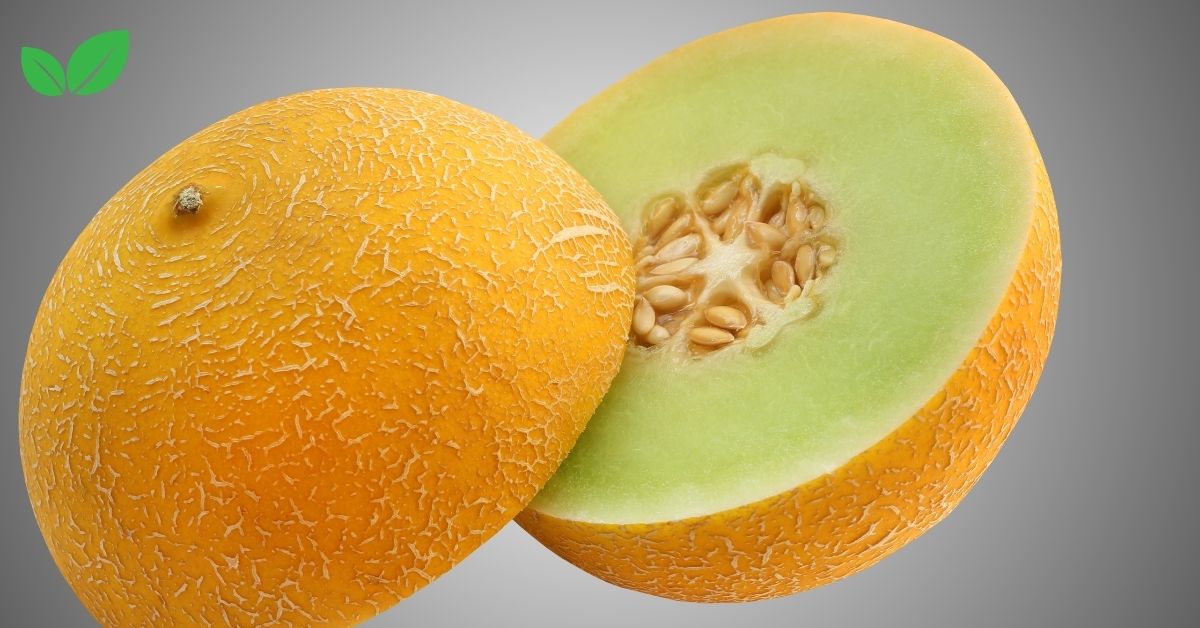Introduction
Honey melon (Cucumis melo), also known as sweet melon or honeydew melon, is a popular fruit grown in many parts of the world for its sweet, juicy flesh. Belonging to the Cucurbitaceae family, honey melons are closely related to cantaloupes, cucumbers, and squashes. The fruit is cultivated in warm climates, particularly in Mediterranean, subtropical, and tropical regions, where its ability to thrive in dry conditions makes it an important crop. In addition to its nutritional benefits, honey melon contributes to the agricultural economy and plays a role in crop diversification, food security, and sustainable farming practices.
This article will explore the ecological niche of honey melon, its environmental importance, the challenges associated with its cultivation, and its contribution to ecosystems. Additionally, we will examine the role honey melon plays in supporting biodiversity, the sustainability of its farming practices, and the potential impacts of climate change on its cultivation.
Honey Melon: An Overview
Honey melons belong to the species Cucumis melo, which encompasses a wide range of melon varieties. The most commonly known type is the honeydew melon, characterized by its smooth, pale green or yellow skin and sweet, juicy flesh. The fruit typically weighs between 1.5 to 4 kilograms and has a high water content, making it refreshing and hydrating, especially during hot weather.
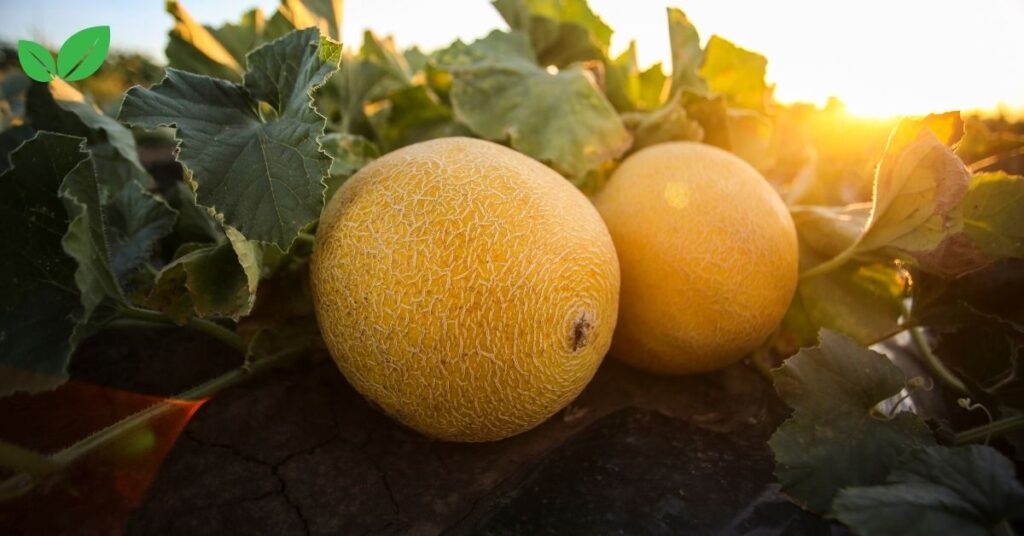
Honey melons are rich in vitamins, especially vitamin C and B vitamins, as well as minerals like potassium. These nutritional benefits, combined with the fruit’s mild, sweet taste, make it a popular choice for both fresh consumption and culinary uses, such as fruit salads, smoothies, and desserts.
Characteristics of Honey Melon
The honey melon plant is an annual vine that grows rapidly under favorable conditions. The plant’s sprawling vines produce large leaves and tendrils that help it spread across the ground or climb structures. The fruit develops from flowers that appear after the vine has established itself, typically 2 to 3 months after planting. Honey melons are usually harvested when fully ripe, as their sugar content and flavor reach their peak at this stage.
The plant thrives in well-drained soils with good moisture retention but is drought-tolerant, making it suitable for cultivation in regions with limited water availability. Honey melons require full sunlight and warm temperatures, making them a common crop in arid and semi-arid regions.
Geographic Distribution and Cultivation
Honey melons are cultivated in various regions around the world, with significant production in the Mediterranean, the Middle East, Asia, and parts of the United States, particularly in California and Arizona. These regions offer the warm climates and long growing seasons necessary for melon cultivation. In recent years, the demand for honey melons has grown globally, and the fruit is now widely available in markets across Europe, North America, and Asia.
Honey melons are typically grown in open fields, but they can also be cultivated in greenhouses or through drip irrigation systems to improve water efficiency. In some regions, honey melon farming is integrated into crop rotation systems, where it follows cereals or legumes, helping to maintain soil health and improve productivity.
Ecological Niche of Honey Melon
Honey melon occupies a specific ecological niche as a cultivated crop in arid and semi-arid regions. Its ability to thrive in environments with limited water resources and its role in agricultural systems make it a valuable species for sustainable farming. Additionally, the cultivation of honey melons supports biodiversity and contributes to ecosystem services such as pollination, soil fertility, and pest control.
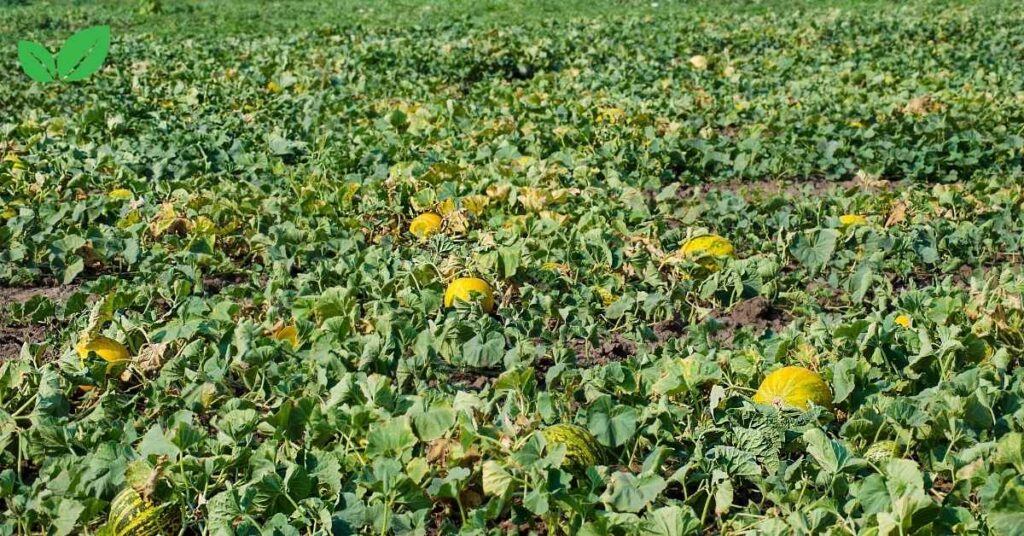
Adaptation to Arid Environments
One of the most significant aspects of honey melon’s ecological niche is its ability to adapt to dry and semi-arid environments. The plant has evolved several mechanisms that allow it to tolerate drought and water scarcity. For example, its extensive root system enables it to access water from deep within the soil, while its thick, waxy leaves help reduce water loss through transpiration.
These adaptations make honey melons particularly well-suited for cultivation in regions where water is a limiting factor. In areas where water resources are scarce, farmers can grow honey melons using drip irrigation or other water-saving techniques, reducing the overall water consumption of the crop while still achieving high yields.
Role in Crop Rotation and Soil Health
Honey melons play an important role in crop rotation systems, particularly in regions where soil fertility and health are concerns. By alternating melon crops with nitrogen-fixing plants such as legumes, farmers can improve soil fertility and reduce the need for synthetic fertilizers. This practice not only benefits the soil but also helps reduce the environmental impact of farming, such as nutrient runoff and greenhouse gas emissions associated with fertilizer use.
Honey melons also contribute organic matter to the soil through the decomposition of plant residues after harvest. This organic matter improves soil structure, enhances water retention, and supports the growth of beneficial microorganisms. In regions where soil degradation and erosion are challenges, honey melon cultivation can help restore soil health and promote sustainable land management.
Pollination and Biodiversity Support
Pollination is a critical ecological function in honey melon cultivation, as the plant relies on insects such as bees to transfer pollen between flowers and facilitate fruit development. Honey melons produce large, showy flowers that attract a range of pollinators, including honeybees, bumblebees, and other insects. These pollinators play a vital role in ensuring successful fruit set and high yields.
In addition to benefiting from pollination, honey melon farming can support local biodiversity by providing habitat and food sources for pollinators and other wildlife. In regions where monoculture farming has reduced habitat availability for insects, birds, and small mammals, honey melon farms can contribute to maintaining biodiversity by offering a more diverse landscape.
Environmental Importance and Benefits
The cultivation of honey melons offers several environmental benefits, particularly in terms of sustainable agriculture and the provision of ecosystem services. In addition to supporting pollinators and improving soil health, honey melon farming can contribute to water conservation, climate resilience, and carbon sequestration.

Water Conservation and Efficient Irrigation
Water conservation is a key concern in many of the regions where honey melons are grown, particularly in arid and semi-arid climates. Honey melons are relatively drought-tolerant, but they still require adequate moisture during the flowering and fruiting stages to ensure high yields. To address this need, many farmers use drip irrigation systems that deliver water directly to the plant’s roots, minimizing water waste and improving efficiency.
Drip irrigation is particularly beneficial for honey melon cultivation because it allows farmers to manage water use more precisely, ensuring that the plants receive the moisture they need without over-irrigating. This method also reduces the risk of waterlogging and soil erosion, both of which can be detrimental to plant growth and soil health.
Climate Resilience and Carbon Sequestration
As climate change continues to affect agricultural systems worldwide, the need for crops that can tolerate extreme weather conditions is becoming increasingly important. Honey melons, with their ability to thrive in hot, dry environments, are well-suited to farming in regions experiencing rising temperatures and changing precipitation patterns.
In addition to their climate resilience, honey melons contribute to carbon sequestration through their role in crop rotation systems. When integrated into sustainable farming practices, honey melon cultivation can help sequester carbon in the soil by promoting the growth of cover crops, improving soil organic matter, and reducing the need for chemical inputs. This helps mitigate the impact of agriculture on climate change and supports the long-term sustainability of farming systems.
Contribution to Food Security
Honey melon cultivation contributes to food security in regions where water scarcity and soil degradation limit the availability of other crops. The fruit’s high water content, combined with its nutritional benefits, makes it an important source of hydration and essential nutrients for communities living in arid environments.
In addition to providing a valuable source of food, honey melon farming can support economic development by creating income opportunities for small-scale farmers. By promoting the cultivation of honey melons as part of a diversified agricultural system, farmers can reduce their dependence on single crops, improving their resilience to market fluctuations and climate change.
Challenges and Environmental Concerns
Despite the many benefits associated with honey melon cultivation, there are also several challenges and environmental concerns that must be addressed to ensure the sustainability of the crop. These include the potential for water overuse, soil depletion, pest and disease management, and the impact of climate change on growing conditions.
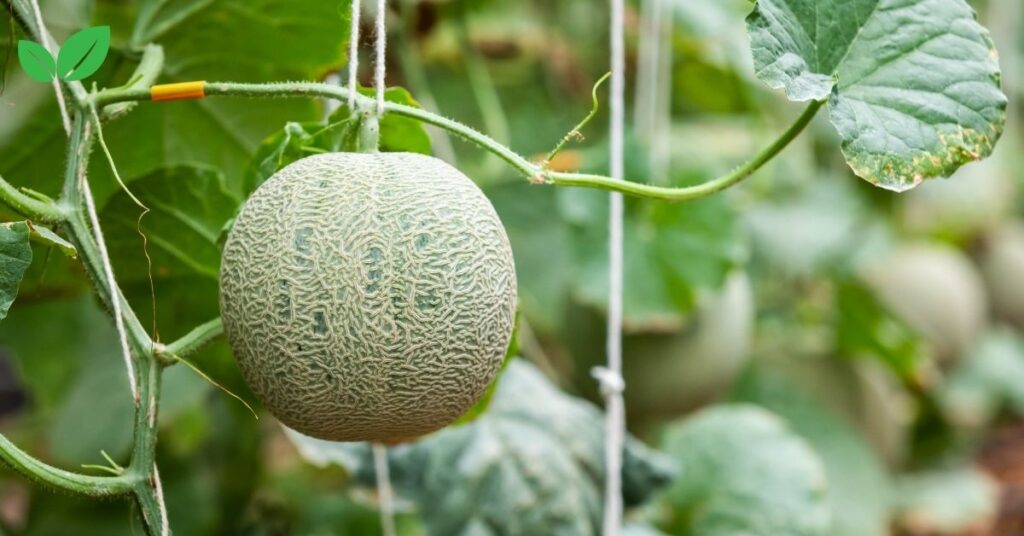
Water Overuse and Irrigation Challenges
While honey melons are relatively drought-tolerant, they still require significant amounts of water during key growth stages. In regions where water resources are already strained, overuse of irrigation for honey melon cultivation can exacerbate water scarcity and contribute to the depletion of local water supplies.
To address this issue, farmers must adopt water-efficient irrigation practices, such as drip irrigation or rainwater harvesting, to reduce their overall water consumption. Governments and agricultural organizations can also support the development of policies that promote sustainable water use in melon farming, ensuring that the crop can be grown without placing undue pressure on local water resources.
Soil Depletion and Fertility Management
Intensive honey melon cultivation can lead to soil depletion, particularly if the crop is grown year after year without adequate nutrient management. Over time, the repeated cultivation of melons can reduce soil fertility, leading to lower yields and the need for increased use of chemical fertilizers.
To prevent soil depletion, farmers must adopt sustainable practices such as crop rotation, cover cropping, and organic fertilization. These methods help maintain soil fertility, improve soil structure, and reduce the environmental impact of farming.
Pest and Disease Management
Honey melons are susceptible to a variety of pests and diseases, including aphids, spider mites, powdery mildew, and fusarium wilt. Managing these threats without relying on chemical pesticides is a challenge for many farmers, particularly those practicing organic or sustainable farming methods.
Integrated pest management (IPM) strategies, which combine biological control methods with cultural practices and targeted pesticide use, are an effective way to manage pests and diseases in honey melon cultivation. IPM focuses on preventing pest outbreaks by enhancing the overall health of the crop and its environment. This includes practices such as crop rotation, using pest-resistant varieties, encouraging beneficial insects (such as ladybugs and predatory mites), and improving soil health to reduce the need for chemical interventions.
Biological control agents, such as natural predators or parasites that target specific pests, can also be introduced to keep pest populations in check. In addition, farmers can employ cultural practices, such as removing diseased plants and using proper spacing techniques to ensure good air circulation, which helps prevent fungal infections like powdery mildew.
The adoption of these strategies not only minimizes the environmental impact of farming but also helps maintain the quality of the fruit and the long-term health of the crop.
Climate Change and Its Impacts on Honey Melon Cultivation
Climate change poses a significant challenge for honey melon cultivation, particularly in regions already prone to extreme weather conditions. Rising temperatures, unpredictable rainfall patterns, and increased frequency of droughts are likely to affect melon yields and the availability of suitable growing conditions.
For example, higher temperatures can accelerate the growth and ripening of melons, but they can also reduce fruit quality by affecting sugar accumulation and flavor. Extreme heat may also lead to increased water loss through transpiration, requiring additional irrigation to maintain adequate soil moisture levels.
Additionally, changes in precipitation patterns, such as prolonged droughts or excessive rainfall, can lead to water stress or waterlogging, both of which are detrimental to honey melon production. Drought conditions can reduce fruit size and yield, while waterlogged soils can cause root rot and other diseases.
To mitigate the impacts of climate change on honey melon cultivation, farmers can adopt climate-smart agricultural practices, such as using drought-resistant melon varieties, improving water management through irrigation scheduling, and employing soil moisture conservation techniques like mulching. These practices can help farmers adapt to changing climatic conditions while maintaining or improving melon yields.
Conservation and Sustainable Farming Practices
Sustainable farming practices are essential for ensuring the long-term viability of honey melon cultivation and minimizing its environmental impact. By incorporating honey melons into agroecological systems, farmers can promote biodiversity, improve soil health, and reduce their dependence on chemical inputs.
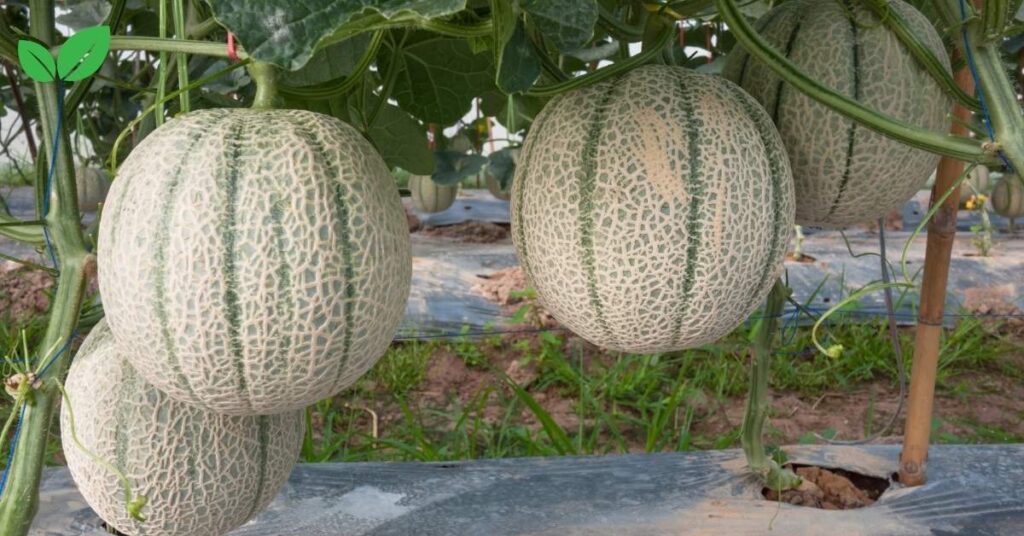
Crop Rotation and Agroforestry
Crop rotation is one of the most effective ways to maintain soil health and prevent the build-up of pests and diseases in honey melon farming. By rotating melons with other crops, such as legumes, cereals, or leafy vegetables, farmers can improve soil fertility and reduce the need for synthetic fertilizers. Leguminous crops, for example, fix nitrogen in the soil, enriching it for future crops and reducing the risk of nutrient depletion.
Agroforestry, which integrates tree planting with crop cultivation, is another sustainable practice that can benefit honey melon farming. By planting trees alongside melon crops, farmers can create a more diverse and resilient agricultural system that supports biodiversity, improves water retention, and enhances soil structure. Trees provide shade, reduce wind erosion, and contribute to carbon sequestration, all of which are important for climate resilience.
Organic and Regenerative Farming
Organic farming practices, which avoid the use of synthetic pesticides and fertilizers, are increasingly being adopted by melon growers to promote environmental sustainability and improve fruit quality. Organic honey melons are grown using natural fertilizers, such as compost and manure, and rely on biological pest control methods to manage pests and diseases.
Regenerative farming, which focuses on restoring and enhancing soil health, goes a step further by actively improving the land on which crops are grown. Practices such as no-till farming, cover cropping, and the use of compost and mulch help increase soil organic matter, improve water infiltration, and enhance biodiversity in the farm ecosystem. These practices not only improve the resilience of honey melon crops to environmental stressors but also help sequester carbon in the soil, contributing to climate change mitigation.
Conservation of Water Resources
Given that honey melons are typically grown in water-scarce regions, conserving water is a priority for sustainable melon farming. Drip irrigation is a widely used technique that delivers water directly to the roots of the plants, minimizing evaporation and runoff while ensuring that each plant receives the moisture it needs to thrive.
In addition to drip irrigation, farmers can implement other water-saving strategies, such as rainwater harvesting, mulching to reduce evaporation, and planting cover crops to retain soil moisture. These practices help farmers use water more efficiently, reduce the risk of water stress, and ensure the sustainability of melon cultivation in regions where water resources are limited.
Economic and Social Importance of Honey Melon Cultivation
Honey melon cultivation plays a significant role in the economies of many regions, particularly in areas where agriculture is a major source of income and employment. The global demand for honey melons, both fresh and processed, provides economic opportunities for small-scale farmers and contributes to the agricultural diversity of regions where the crop is grown.
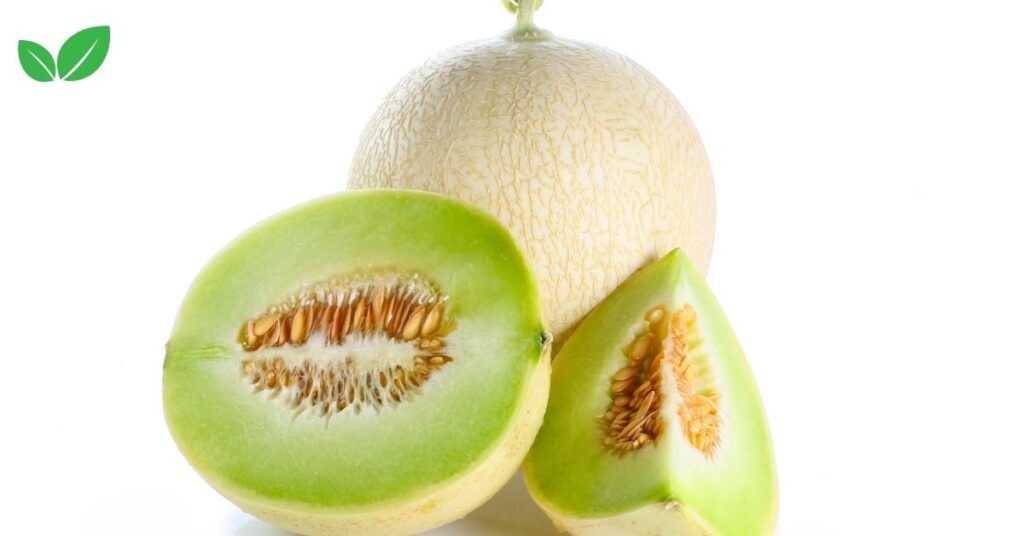
Income Generation and Livelihoods
In regions where honey melons are grown commercially, such as in Mediterranean countries, Central Asia, and parts of North and South America, the fruit is an important source of income for farmers. Honey melons are sold in local markets, exported to international markets, and used in the production of processed products such as juices, preserves, and dried fruit.
The cultivation of honey melons provides employment opportunities for rural communities, particularly during the planting, harvesting, and processing seasons. In many cases, smallholder farmers grow melons as part of a diversified farming system, which helps reduce their vulnerability to market fluctuations and climate-related risks.
Food Security and Nutrition
Honey melons contribute to food security by providing a nutritious and hydrating food source in regions where access to fresh fruits and vegetables may be limited. The fruit’s high water content, combined with its rich supply of vitamins and minerals, makes it an important part of the diet in arid and semi-arid regions, where water scarcity can impact the availability of other crops.
In addition to their nutritional value, honey melons play a role in diversifying the diet and improving food security in rural areas. By promoting the cultivation of melons as part of a broader agricultural strategy, governments and development organizations can help improve the resilience of food systems and ensure that communities have access to a variety of nutritious foods.
Conclusion
Honey melon (Cucumis melo) is a valuable crop with a wide range of environmental, economic, and social benefits. Its ability to thrive in arid and semi-arid regions, combined with its nutritional value and market demand, makes it an important species for sustainable agriculture and food security. Honey melon cultivation supports biodiversity, improves soil health, conserves water resources, and contributes to climate resilience, making it a key crop for regions facing environmental challenges.
However, the sustainability of honey melon farming depends on the adoption of environmentally friendly practices, such as efficient water use, crop rotation, and integrated pest management. As climate change continues to impact agricultural systems worldwide, honey melon farmers must adapt to changing conditions by implementing climate-smart practices that improve the resilience of their crops and ensure long-term productivity.
By promoting sustainable farming practices and supporting the conservation of water and soil resources, honey melon cultivation can continue to provide economic opportunities, support food security, and contribute to the health and stability of ecosystems in the regions where it is grown. Through thoughtful management and a commitment to sustainability, honey melon farming can play a key role in addressing the environmental and social challenges of the future.
Read More: Pulasan: The Tropical Superfruit That Supports Biodiversity and the Environment

